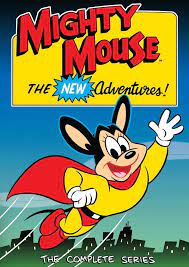Introduction:
In the dynamic world of computer peripherals, the term “Mighty Mouse” conjures images of innovation, functionality, and cutting-edge design. The Mighty Mouse, a product line developed by Apple Inc., has evolved over the years to become synonymous with powerful and precise navigation for Mac users. In this exploration, we delve into the history, features, and impact of the Mighty Mouse, tracing its journey from its inception to the present day.
The Birth of the Mighty Mouse:
- Early Iterations: The journey of the Mighty Mouse began in 2005 when Apple introduced its revolutionary multi-button mouse. This marked a departure from the single-button design that had been a staple of Apple mice. The original Mighty Mouse featured a sleek and minimalist appearance, embodying Apple’s commitment to design aesthetics.
- Touch-Sensitive Technology: What set the Mighty Mouse apart was its innovative touch-sensitive technology. Instead of traditional physical buttons, the mouse incorporated touch-sensitive areas that allowed users to perform different actions by pressing on specific areas of the mouse’s surface. This introduced a new level of interactivity and functionality.
- Scroll Ball and 360-Degree Scrolling: The Mighty Mouse also introduced the now-iconic scroll ball—a small, circular ball situated on the mouse’s top surface. This ball enabled users to scroll in any direction, providing a 360-degree scrolling experience. The intuitive design enhanced navigation and productivity for users, especially in documents and web pages.
The Evolution Continues:
- Transition to Magic Mouse: In 2009, the Mighty Mouse underwent a transformation, evolving into the Magic Mouse. While maintaining the sleek design and touch-sensitive technology, the Magic Mouse introduced multi-touch gestures, allowing users to swipe, scroll, and navigate with natural and intuitive movements.
- Multi-Touch Gestures: The integration of multi-touch gestures marked a significant leap forward in mouse technology. Users could now perform a range of actions, such as swiping between pages, zooming in and out, and accessing Mission Control, with simple and fluid finger movements. The Magic Mouse became a versatile tool for creative professionals and everyday users alike.
- Laser Tracking for Precision: The Magic Mouse featured laser tracking technology, enhancing precision and accuracy in cursor movement. This improvement, combined with the multi-touch capabilities, made the Magic Mouse a powerful tool for tasks requiring fine control, such as graphic design and video editing.
- Seamless Integration with Mac Ecosystem: Apple’s commitment to a seamless user experience extended to the Magic Mouse. Designed specifically for use with Mac computers, the mouse seamlessly integrated with macOS, providing users with a cohesive and intuitive navigation experience. The Magic Mouse became an essential companion for Mac users who valued both form and function.
The Magic Mouse 2:
- Wireless and Rechargeable: The Magic Mouse 2, introduced in 2015, continued the legacy of its predecessor with enhancements in design and functionality. One notable improvement was the transition to a built-in rechargeable battery. This eliminated the need for traditional disposable batteries, aligning with Apple’s commitment to sustainability.
- Sleek and Streamlined Design: The Magic Mouse 2 retained the sleek and streamlined design of its predecessor, featuring a continuous top shell with no visible buttons. The absence of physical buttons contributed to the mouse’s modern and minimalist aesthetic, in line with Apple’s design philosophy.
- Lightning Port for Charging: The Magic Mouse 2 adopted the Lightning port for charging, the same port used for iPhones and iPads. This standardized approach to charging added convenience for users who already owned Apple devices, as they could use a single cable for multiple devices.
- Optimized Bottom Surface: The Magic Mouse 2 also featured an optimized bottom surface for improved tracking and movement. This enhancement, combined with the precision of laser tracking, further solidified the mouse’s reputation for accurate and responsive performance.
The Impact on User Experience:
- Seamless Navigation and Productivity: The Mighty Mouse and its successors have significantly impacted the user experience for Mac users. The combination of touch-sensitive technology, multi-touch gestures, and precise tracking has streamlined navigation and enhanced productivity. Users can effortlessly switch between tasks, scroll through documents, and execute commands with fluid and natural movements.
- Creative Applications: The Magic Mouse, in particular, has found a niche among creative professionals. Its precision, multi-touch capabilities, and ergonomic design make it well-suited for tasks such as graphic design, video editing, and 3D modeling. The ability to execute complex actions with simple gestures adds a layer of efficiency to creative workflows.
- Integration with macOS Features: Apple’s commitment to integration extends beyond hardware design. The Magic Mouse seamlessly integrates with macOS features, including Mission Control, Exposé, and Launchpad. These features, combined with multi-touch gestures, create a cohesive and intuitive computing experience.
- User-Friendly Setup and Configuration: The setup and configuration of the Magic Mouse are designed to be user-friendly. Pairing the mouse with a Mac is a straightforward process, and users can customize settings, such as tracking speed and gesture preferences, to suit their individual preferences. This emphasis on user customization contributes to a personalized and tailored experience.
- Continued Popularity and Enduring Design: Over the years, the Magic Mouse has maintained its popularity among Mac users. Its enduring design, innovative features, and seamless integration with the Mac ecosystem contribute to its continued success. The Magic Mouse has become a symbol of Apple’s commitment to combining form and function in its products.
The Future of Mouse Technology:
- Exploring New Interfaces: As technology continues to advance, the future of mouse technology may involve exploring new interfaces and interaction methods. Gesture-based controls, augmented reality, and advancements in haptic feedback are areas that could influence the next generation of mice.
- Integration with Augmented Reality: The integration of mice with augmented reality (AR) interfaces presents exciting possibilities. Mice could evolve to incorporate features that enhance interactions within AR environments, providing users with a tangible and precise tool for navigating virtual spaces.
- Advancements in Haptic Feedback: Haptic feedback, which provides tactile sensations in response to user actions, could play a significant role in the future of mice. Advanced haptic feedback could simulate the feel of different surfaces, textures, or resistance levels, adding a new dimension to the user experience.
- Enhancements in Precision and Sensitivity: Future mice may see enhancements in precision and sensitivity, catering to the demands of users engaged in tasks that require fine control, such as professional design work and scientific applications.
Conclusion:
The Mighty Mouse, in its various iterations, has left an indelible mark on the landscape of computer peripherals. From its early days as a multi-button mouse with touch-sensitive technology to its evolution into the Magic Mouse with multi-touch gestures and precise laser tracking, the Mighty Mouse has been at the forefront of innovation. Its impact on the user experience for Mac users, particularly in creative and professional settings, is a testament to Apple’s commitment to seamless design and functionality. As we look toward the future, the Mighty Mouse sets the stage for continued exploration of new interfaces, enhanced haptic feedback, and advancements in precision, ensuring that the world of mouse technology remains as dynamic and transformative as ever.





Leave a comment